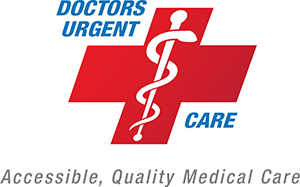Urgent Treatment: Bridging the Space In Between Health Care and Emergency Situation Areas
Urgent care facilities have actually become essential parts in the healthcare continuum, efficiently addressing the needs of clients who require prompt clinical focus for non-life-threatening problems. By offering services past normal workplace hours and fitting walk-in clients, these centers play an essential role in relieving the stress on emergency situation rooms. The landscape of immediate care is complicated, with distinctive differences from both primary care and emergency services. Comprehending these nuances can significantly influence individual end results and medical care efficiency, triggering more expedition right into exactly how immediate treatment can improve the future of clinical accessibility.
What Is Urgent Treatment?
Urgent treatment stands for an essential element of the healthcare system, supplying instant medical interest for non-life-threatening conditions that need timely intervention. These centers are made to connect the gap in between health care providers and emergency departments, allowing clients to obtain timely therapy without the lengthy wait times commonly connected with emergency clinic.
Immediate care facilities generally run outside of conventional workplace hours, accommodating people during weekend breaks and nights. They are staffed by healthcare experts, consisting of doctors, registered nurse specialists, and medical professional aides, who are trained to detect and deal with a variety of clinical concerns - urgent care fresno. Usual problems dealt with at immediate care centers include minor cracks, sprains, infections, allergies, and minor cuts needing stitches
The availability of immediate treatment solutions has actually made them a preferred option for individuals seeking prompt relief from severe clinical problems. This model not only eases pressure on emergency departments but likewise advertises an extra effective use healthcare sources. By giving a hassle-free option for non-emergency scenarios, urgent care plays an essential role in enhancing total client care and improving health end results for communities.
## When to Utilize Urgent Treatment
When to utilize urgent care can significantly impact client end results and resource appropriation within the health care system,Recognizing. Immediate care facilities are made to address non-life-threatening clinical issues that need prompt attention however do not necessitate the sources of an emergency clinic.
Individuals should take into consideration going to urgent take care of conditions such as small fractures, strains, cuts requiring stitches, and light to modest diseases like influenza symptoms, infections, or allergic responses. Furthermore, immediate care is ideal for diagnostic services, such as X-rays and lab examinations, which can give prompt outcomes for typical ailments.
It is important to distinguish in between situations that necessitate urgent care and those that require emergency services. Serious injuries, upper body pain, problem breathing, or indicators of stroke ought to prompt immediate emergency situation space gos to. Comprehending these differences can result in extra effective usage of health care resources, lowering delay times in emergency situation divisions and making sure that those in vital demand receive timely treatments.
Advantages of Urgent Care
Accessing immediate care offers numerous advantages for clients looking for prompt clinical attention. Immediate care centers are designed to fit individuals with non-life-threatening problems, permitting for quicker medical diagnosis and therapy.

Cost-effectiveness is another considerable advantage. Immediate treatment brows through typically incur lower out-of-pocket expenditures than emergency clinic visits, making it a much more economically practical alternative for individuals. Many urgent treatment centers approve a variety of insurance policy strategies, even more reducing the economic concern.
In addition, immediate treatment facilities are outfitted to take care of a selection of conditions, from small injuries to typical illnesses, offering thorough treatment in a solitary area. This multi-faceted strategy not just simplifies the client experience but likewise cultivates continuity of treatment, enhancing general health end results.
Distinctions From Medical Care
Typically ignored, the differences between urgent treatment and medical care are important for clients browsing their healthcare options. Immediate care facilities mostly address immediate, non-life-threatening medical concerns that require prompt interest, such as small injuries, infections, and ailments. These facilities commonly run outside of regular workplace hours and do not call for appointments, making them a practical option for clients that require quick assistance.
In contrast, medical care service providers concentrate on detailed, ongoing health administration. They construct lasting connections with clients, overseeing preventative care, chronic illness administration, and regular wellness testings. Key care stresses continuity of care, permitting for customized therapy plans and comprehensive wellness analyses that urgent care setups can not provide.
In addition, medical care medical professionals usually coordinate referrals to specialists and preserve in-depth clinical histories, which is crucial for managing intricate health issues with time. While immediate care can properly resolve intense concerns, it must not replace the foundational role of key treatment in total health and wellness administration. urgent care fresno. Understanding these differences assists individuals make educated decisions regarding where to seek treatment based on their specific health and wellness requirements
Differences From Emergency Situation Rooms
Patients often locate themselves unclear regarding when to see an immediate treatment center versus an emergency clinic. Recognizing the crucial distinctions can assist in making the right selection for their healthcare needs.

On the other hand, emergency clinic are geared click this link up to manage dangerous and vital problems, such as extreme injury, cardiac arrest, or strokes. Clients experiencing signs and symptoms that pose an instant risk to their health must look for treatment at an emergency clinic. Emergency situation divisions are staffed with specific medical workers and possess sophisticated diagnostic tools to handle intricate instances.
One more substantial distinction lies in the expense and wait times. Immediate treatment gos to tend to be extra inexpensive and involve shorter wait times compared to emergency clinic, which often experience high individual volumes. Ultimately, understanding these differences encourages clients to make informed choices, guaranteeing they receive proper and prompt treatment.
Verdict
Finally, urgent care serves a critical function in the health care system by giving timely clinical attention for non-life-threatening problems. Its availability, prolonged hours, and cost-effectiveness placement it as a useful source for people seeking immediate treatment. By successfully linking the void in between health care and emergency situation solutions, immediate care centers aid to ease the stress on emergency departments, ensuring that patients get ideal and reliable therapy without unnecessary delays.
The landscape of immediate treatment is complicated, with unique distinctions from both key treatment and emergency solutions. By supplying a hassle-free choice for non-emergency situations, urgent treatment plays an important role in boosting total client care and boosting health and click to read more wellness end results for communities.
Commonly neglected, the differences in between urgent treatment and primary treatment are crucial for individuals navigating their health care choices. Key care highlights continuity of care, enabling for tailored therapy strategies and thorough wellness evaluations that urgent care settings can not supply.
By successfully connecting the space between primary treatment and emergency services, immediate treatment centers aid to ease the pressure on emergency situation departments, ensuring that people obtain reliable and appropriate treatment without unnecessary hold-ups.